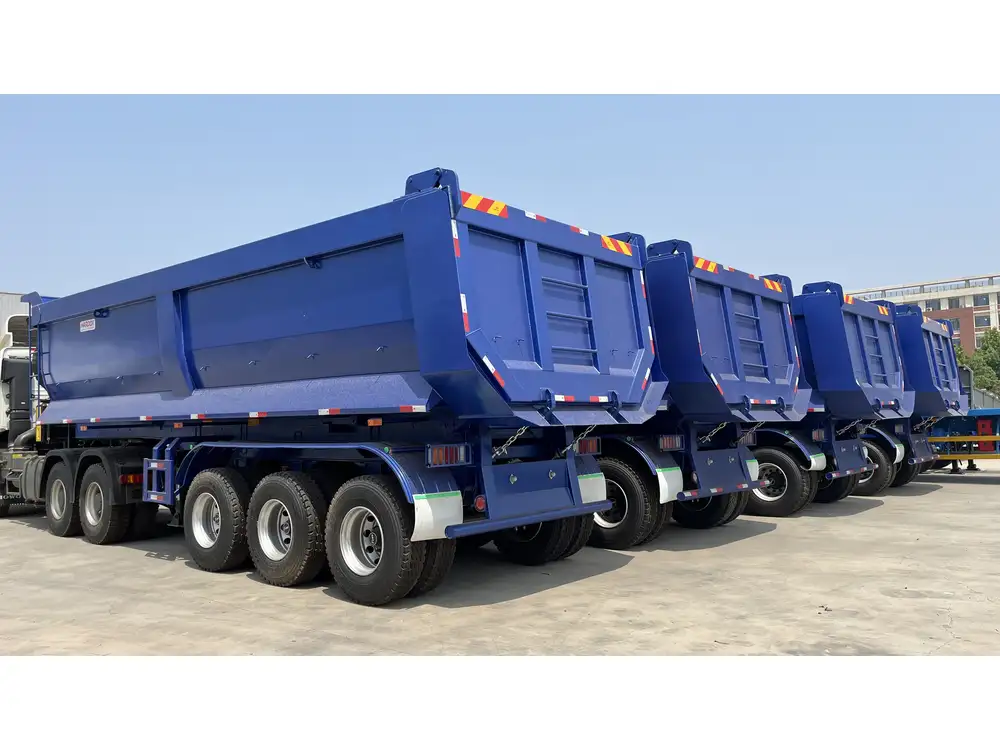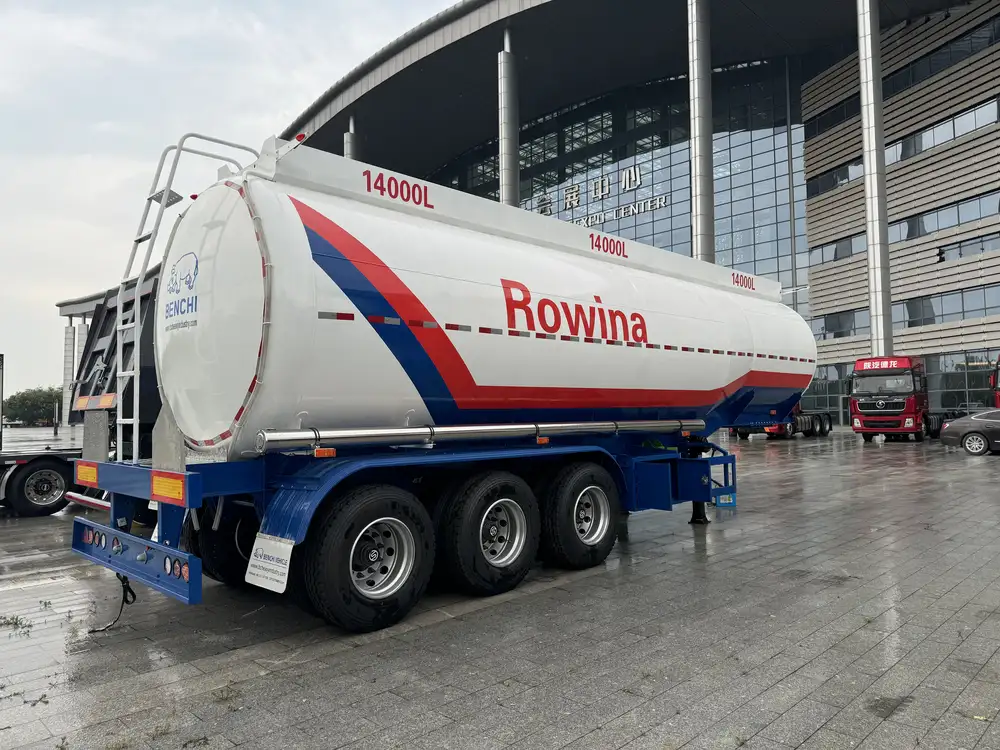In the realm of transportation logistics, the chosen vehicle can significantly affect operational efficiency and cost-effectiveness. Among the myriad of options available, the skeletal semi-trailer stands out as a powerful asset for businesses that require adaptability and innovative solutions for cargo transport. In this comprehensive guide, we delve into the intricacies of skeletal semi-trailers—examining their design, applications, benefits, key considerations when selecting one, and the future of this essential equipment in the transportation industry.
Understanding Skeletal Semi-Trailers
At its core, a skeletal semi-trailer is a specialized type of flatbed trailer designed primarily for carrying containers. Characterized by a lightweight, open-frame structure, it allows for the swift and efficient loading and unloading of containerized cargo. Unlike traditional trailers that come equipped with solid walls, a skeletal semi-trailer offers:
- Reduced Weight: Its skeletal frame minimizes weight while maximizing load capacity.
- Versatile Container Transport: It can accommodate various sizes of ISO containers, typically 20’, 40’, and occasionally 45’.
- Efficient Loading: Its open design allows for quicker handling and safer stacking of containers.
Key Components of Skeletal Semi-Trailers
Frame: The backbone, usually constructed from high-strength steel or aluminum alloys, is designed for durability while maintaining a lightweight profile.
Axles and Suspension: These crucial components come in various configurations (e.g., tandem, tri-axle) to support load distribution and enhance ride quality.
Kingpin and Coupling Mechanism: A robust kingpin connects the trailer to the tractor unit, allowing for smooth articulation and maneuverability.
Braking System: Essential for safety, this includes air brakes and potentially electrical components to ensure effective stopping power.
Loading Equipment: Features like twist locks are standard, intended for securing cargo containers firmly during transit.
| Component | Function | Material |
|---|---|---|
| Frame | Structure and durability | Steel/Aluminum |
| Axles | Load support | Steel |
| Kingpin | Coupling to tractor | Steel |
| Brakes | Stopping power | Metal composites |
| Twist Locks | Container security | Steel |

Applications of Skeletal Semi-Trailers
The versatility of skeletal semi-trailers enables them to serve various industries and applications, including:
Intermodal Transport: Facilitating the transfer of cargo between different transportation modes—such as ships, trains, and trucks—skeletal semi-trailers are crucial in intermodal logistics.
Container Transport: The predominant use is for transporting shipping containers directly from ports to warehouses or distribution centers.
Heavy Hauling: In some configurations, skeletal semi-trailers can be used to haul oversized equipment in conjunction with flatbed trailers.
Bulk Material Transport: With adaptable designs, some skeletal trailers can be converted to accommodate bulk containers for material such as building supplies.
Benefits of Skeletal Semi-Trailers
Choosing skeletal semi-trailers provides numerous advantages across the board:
1. Cost-Effectiveness
Fuel Efficiency: Their lightweight design contributes to improved fuel economy, particularly important for long-haul operations.
Lower Construction Costs: The simplicity of the design means skeletal trailers generally have lower manufacturing costs, potentially lowering acquisition prices.

2. Enhanced Load Flexibility
Adaptability: Capable of accommodating various container sizes, they provide logistics managers with expansive operational versatility.
Quick Handling: The design allows for rapid loading and unloading, leading to reduced turnaround time and increased productivity.
3. Customizations Available
Tailored Designs: Manufacturers often provide bespoke options—including adjustable tri-axle configurations, reinforced frames, or enhanced braking systems—to meet specific customer requirements.
Attachments and Accessories: Additional equipment, such as side guards and tarpaulins, can be added to ensure compliance with regulations and enhance load safety.
Considerations When Selecting a Skeletal Semi-Trailer
When investing in a skeletal semi-trailer, careful consideration of various factors is essential to ensure the best fit for operational needs.

1. Load Capacity and Weight Class
Understanding the maximum weight the trailer can safely carry is crucial. Overloading can result in costly fines, safety hazards, and damage to the trailer.
2. Trailer Dimensions
Choose a trailer that matches the dimensions of the containers frequently handled. Standard configurations include:
- 20-Foot Container Trailers: Best suited for smaller cargo.
- 40-Foot Container Trailers: The most common choice for general shipping needs.
- 45-Foot Container Trailers: Ideal for maximum capacity where permitted.
3. Durability and Maintenance
Select a trailer from reputable manufacturers known for building resilient equipment. Additionally, consider the long-term maintenance requirements and accessibility of spare parts.

4. Regulatory Compliance
Ensure the trailer meets local regulations and safety standards. This includes checking braking systems, lighting, and any other mandatory features.
Future Trends in Skeletal Semi-Trailers
The logistics and transportation industry is evolving rapidly thanks to technological advancements and changing market demands. Key trends to watch for skeletal semi-trailers include:
1. Sustainability Efforts
Advanced Materials: Expect more use of lightweight and recyclable materials to enhance sustainability without compromising strength.
Alternative Fuel Solutions: Innovations like electric and hybrid trucks may influence the designs and operations of semi-trailers to complement these vehicles.

2. Smart Technology Integration
Telematics: More trailers will incorporate telematics systems for real-time tracking and monitoring, allowing for enhanced fleet management and operational efficiency.
Autonomous Features: As the industry moves towards automation, modifications will be made to skeletal trailers to facilitate driverless transport solutions.
3. Enhanced Modular Designs
As logistics requirements evolve, so too will the designs of skeletal trailers. Expect to see modular systems that allow for easier configuration changes to accommodate diverse cargo types.
Conclusion: The Strategic Advantage of Skeletal Semi-Trailers
Investing in skeletal semi-trailers grants businesses a strategic advantage in the competitive landscape of transport logistics. Their adaptability, cost-efficiency, and continued evolution in technology position these trailers as vital assets in modern supply chain solutions. By understanding their applications, benefits, and future trends, logistics managers can make informed decisions that will enhance operational performance and drive profitability.

Call to Action
As you consider the diverse options available for your transport needs, think critically about the impact of choosing the right equipment. Our commitment to delivering high-quality, customizable skeletal semi-trailers will empower your logistics operations with the efficiency and reliability needed to thrive in today’s marketplace. Contact us to learn more about our innovative trailers and how they can transform your transportation capabilities.
In a world where efficiency and cost-effectiveness are paramount, understanding the nuances of skeletal semi-trailers will undoubtedly contribute to a more streamlined and profitable operational strategy. From enhancing fleet versatility to embracing future innovations, the journey begins with informed decisions and expert guidance.



